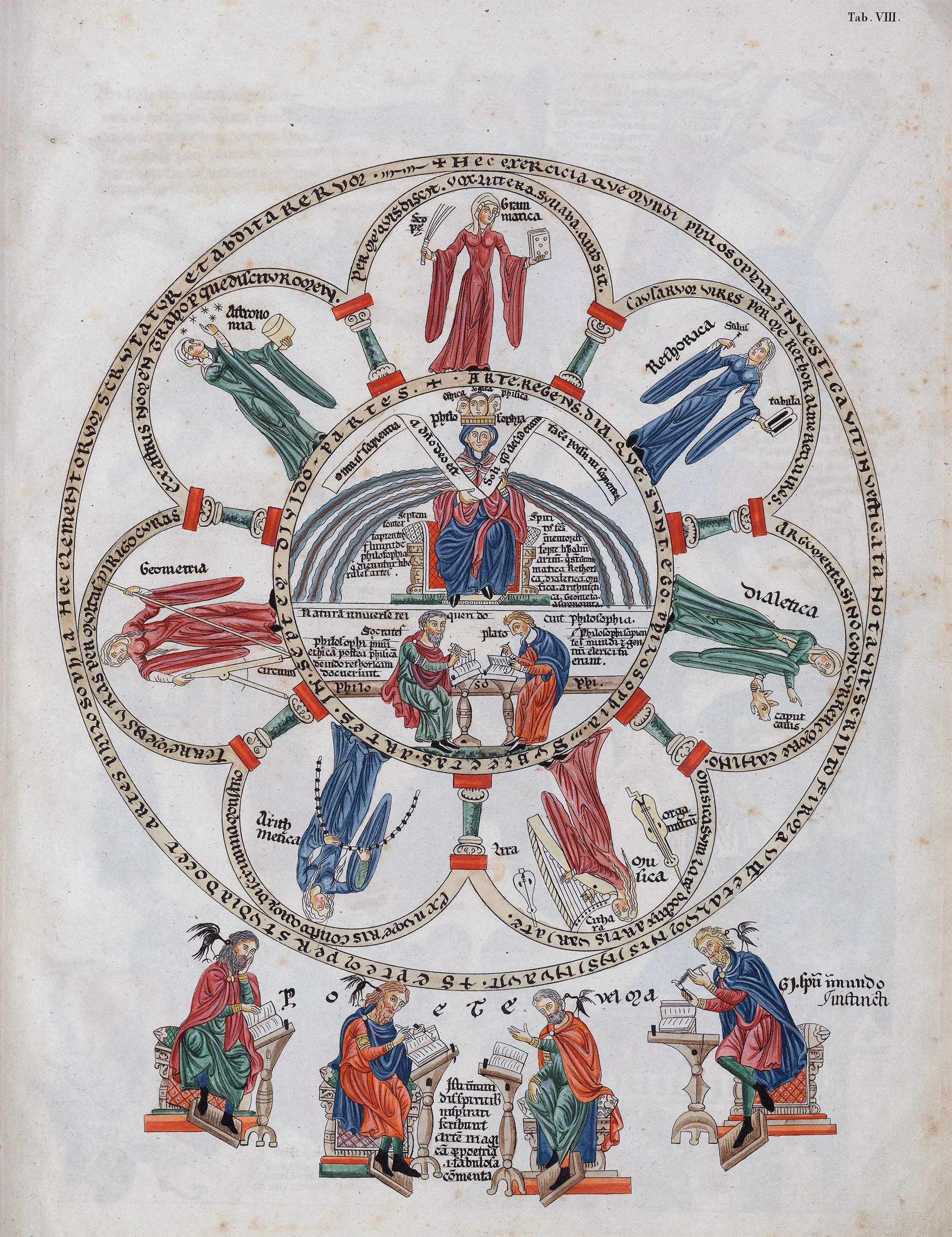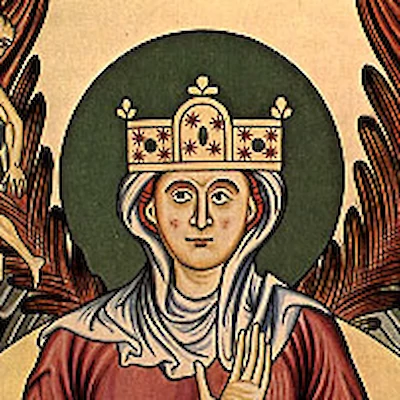Herrad of Landsberg
Creating the first female-authored encyclopedia




In 11th century Europe, the nuns were doing great things. Not long after Hildegard Von Bingen invented the first constructed language and wrote the first extant description of the female orgasm, Herrad of Landsberg set out to document all human knowledge.
Herrad of Landsberg was an Alsatian nun and the abbess of the Hotenburg Abbey on the border between France, Germany and Switzerland. Herrad was a teacher and theologian, and after being elected abbess in 1167, she was the leader of one of the most powerful Abbeys in France.
Hotenburg Abbey already provided some of the most comprehensive education available to women in the 12 century, and Herrad decided to make it even better. Even before becoming abbess, Herrad had started work on the book that became her legacy: the Hortus Deliciarum. A tempting title for a book of knowledge, the Garden of Delights expounded on almost every aspect of the science and religion of the day. Compiling Arab and classical writings with her own poems, music, and illustrations, the Hortus Deliciarum closed out at 648 pages with over 300 illustrations.
After her death in 1195, Herrad of Landsberg lived on in the pages of her Hortus Deliciarum, shielded from time in Hotenburg Abbey, and later moved to the Library of Strasbourg. Tragically, during the Franco-Prussian War, the Hortus was destroyed, burned in 1870 during the siege of Strausburg. Luckily for us, in 1818, the studious Christian Maurice Engelhardt transcribed the book and copied many of its illustrations, the only remaining way to peek into the brilliant mind of Herrad of Landsberg.